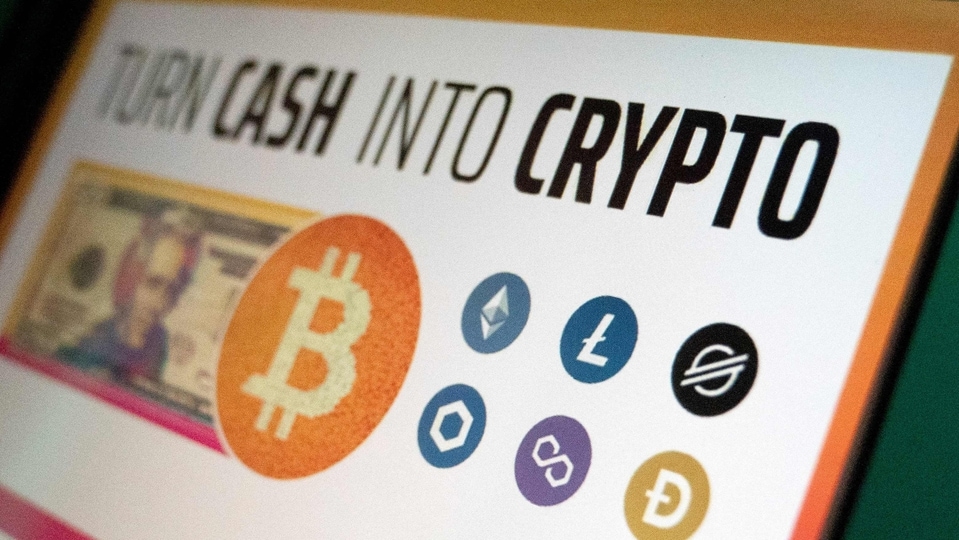Crypto Shaken as Silicon Valley Bank Risk Depegs 2nd-Largest Stablecoin
The fallout from the failure of Silicon Valley Bank reached further into crypto, unhinging a key cog in the market that’s meant to be among the safest digital assets in the space.

The fallout from the failure of Silicon Valley Bank reached further into crypto, unhinging a key cog in the market that's meant to be among the safest digital assets in the space.
The second-largest stablecoin, USD Coin traded as low as 81.5 cents as investors digested the exposure of its issuer Circle Internet Financial Ltd. to Silicon Valley Bank, which had just collapsed in one of the largest failures in US banking history. Late Friday, after hours of silence, Circle disclosed that $3.3 billion of its roughly $40 billion stockpile of reserves was held with the failed bank.
On Saturday afternoon, Chief Executive Officer Jeremy Allaire provided additional detail on Circle's exposure to the bank, saying in a statement on the company's blog and in tweets that USDC was “100% collateralized with a combination of cash and US Treasuries” and would remain “redeemable 1 for 1” with the US dollar. USDC's price rallied on the statement, trading around 97 cents as of 3:45 pm in New York.
“Specifically, USDC is currently collateralized 77% ($32.4B) with US Treasury Bills (with a three month or less maturation period), and 23% ($9.7B) with cash held at a variety of institutions, of which SVB is only one,” according to the blog post. Circle's Treasuries are held in custody at BNY Mellon, and managed by BlackRock.
A majority of its cash reserves are held at BNY Mellon; Circle said it deposited $5.4 billion there in the last week. The stablecoin firm had previously disclosed that its cash reserves were held at six banks, including BNY Mellon and Silicon Valley Bank, but before Friday had not provided specific dollar amounts for the individual allocations.
USD Coin, or USDC, is an asset-backed stablecoin and a widely used plank of crypto markets. The token is intended to hold a constant $1 value, fully backed by reserves of cash and short-dated Treasuries.
USDC had a circulating supply of 39.7 billion tokens as of Saturday afternoon in New York, CoinGecko data shows. Billions of dollars worth of the token had been redeemed by traders since Friday, some of whom swapped their holdings into Tether's USDT stablecoin, data from Nansen and Curve Financial show.
As for Circle's larger rival, top stablecoin Tether has held firm at or above $1. While Tether has previously faced scrutiny over its reserves, it said on Friday that it did not have any exposure to SVB.
In earlier tweets, Circle's Chief Strategy Officer Dante Disparte described the fall of Silicon Valley Bank as a “black swan failure” in the US financial system, saying that without a federal rescue plan there would be “broader implications for business, banking and entrepreneurs.”
Coinbase's Step
Stablecoins like USDC are intended to hold a set value against another, highly liquid asset like the US dollar. They come in a variety of forms and some, like Circle's, are underpinned by reserves of cash and bonds. Investors often park funds in stablecoins as they move between crypto trades.
As the selloff in USDC worsened on Friday night, US-based crypto exchange Coinbase Global Inc. said it would be “temporarily pausing” the conversion of USDC into US dollars during the weekend, and would resume on Monday when banks open. “Your assets remain safe & available for on-chain sends,” the crypto exchange said in a tweet from an official account.
In its statement on Saturday, Circle acknowledged that while “USDC can be used 24/7/365 on chain,” any issuance and redemption of the stablecoin “is constrained by the working hours of the US banking system.”
Trading in USDC futures suggests optimism Circle will overcome its current pinch. Data from research firm Coinglass shows that funding rates for USDC contracts on at least one exchange turned positive as of Saturday morning in New York, indicating that traders are betting on a recovery of the coin's dollar peg. When a funding rate is positive, long positions pay short positions, reflecting a bullish sentiment from traders on the token's prices.
“USDC is going to be ok, it is resilient and well managed, with a capital structure stronger than most banks,” Oliver von Landsberg-Sadie, co-founder of BCB Group, which runs a payment network for crypto companies, said in an email.
In the meantime, the fall in USDC has had a knock-on effect on DeFi applications which let users trade, borrow and lend coins and which tend to rely heavily on trading pairs involving the stablecoin. On Saturday, members of the DeFi community that runs DAI proposed changes to the mechanism that helps keep its stablecoin pegged to $1 in a way that would reduce its exposure to USDC.
“Unless there's a concrete bailout plan this weekend, I think markets will be ugly again next week,” said Teong Hng, chief executive officer at crypto investment firm Satori Research, about the failure of SVB.
Crypto's Woes
The crypto sector was already reeling from a prolonged rout that's knocked $2 trillion off the value of digital assets since November 2021, precipitating a series of implosions such as the algorithmic TerraUSD stablecoin, the Three Arrows Capital hedge fund and the FTX exchange.
The TerraUSD token — known as UST — tried to use a mix of algorithms and trader incentives involving a sister token, Luna, to hold its value. The $60 billion wipeout of that system intensified global regulatory scrutiny of stablecoins.
“I think the market ‘panic priced' USDC like it priced USDT around the Luna collapse,” said Haohan Xu, chief executive officer of Apifiny, an institutional trading platform. “It's driven by Circle's exposure at SVB plus Coinbase closing off its USDC convert function.”
Trying to Reassure
Crypto firms including Binance and Gemini on Friday used Twitter to try to reassure their customers about any risks posed by SVB.
Changpeng Zhao, chief executive officer at Binance, the largest digital-asset exchange, tweeted that the firm doesn't have any exposure and its funds are safe. Paxos Trust Co., issuer of Pax Dollar, and crypto exchange Gemini said they have no relationship with the bank, according to statements on their official Twitter accounts.
By contrast, bankrupt crypto lender BlockFi has about $227 million in an account at SVB, according to a court filing.
Catch all the Latest Tech News, Mobile News, Laptop News, Gaming news, Wearables News , How To News, also keep up with us on Whatsapp channel,Twitter, Facebook, Google News, and Instagram. For our latest videos, subscribe to our YouTube channel.


























